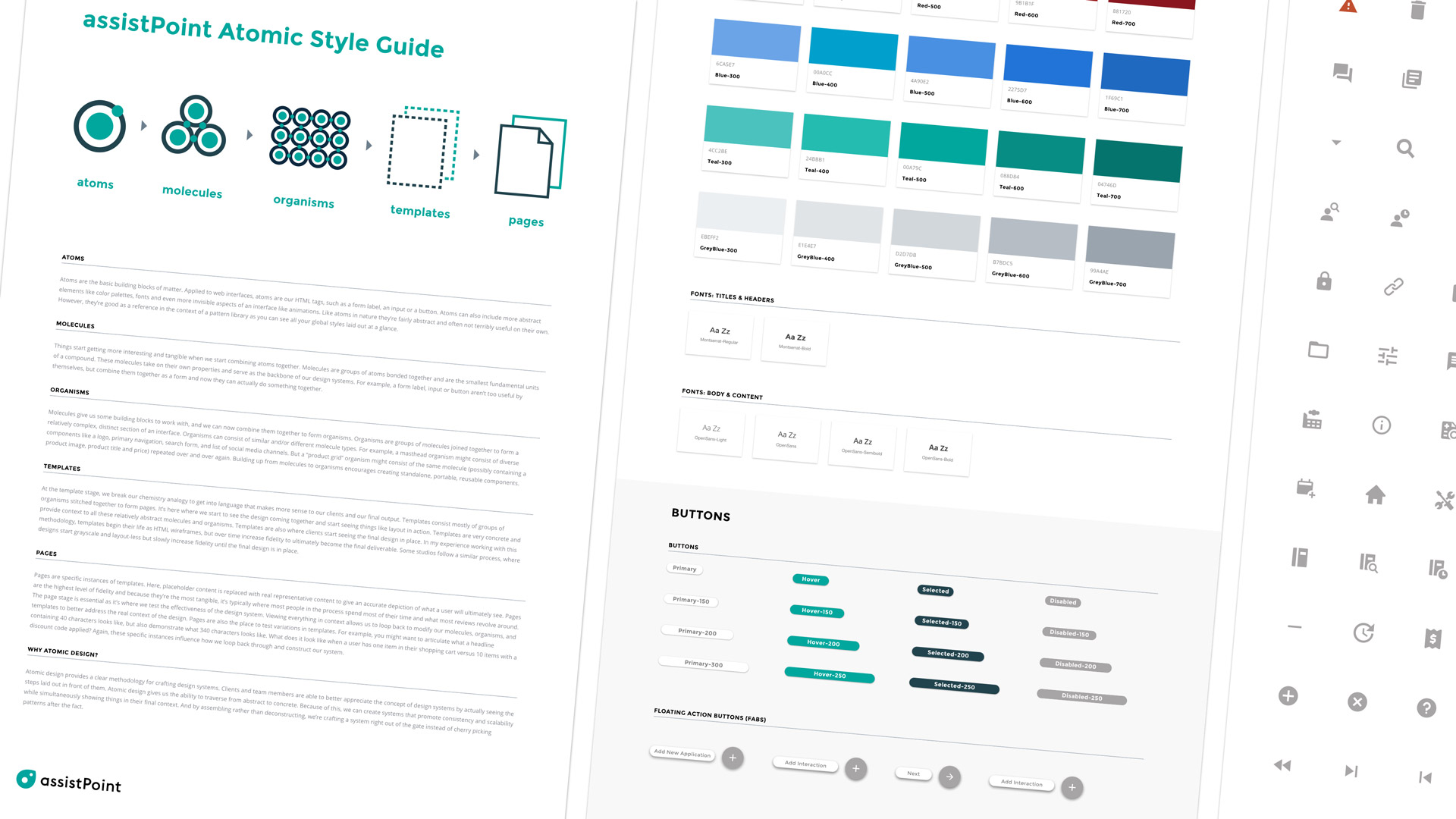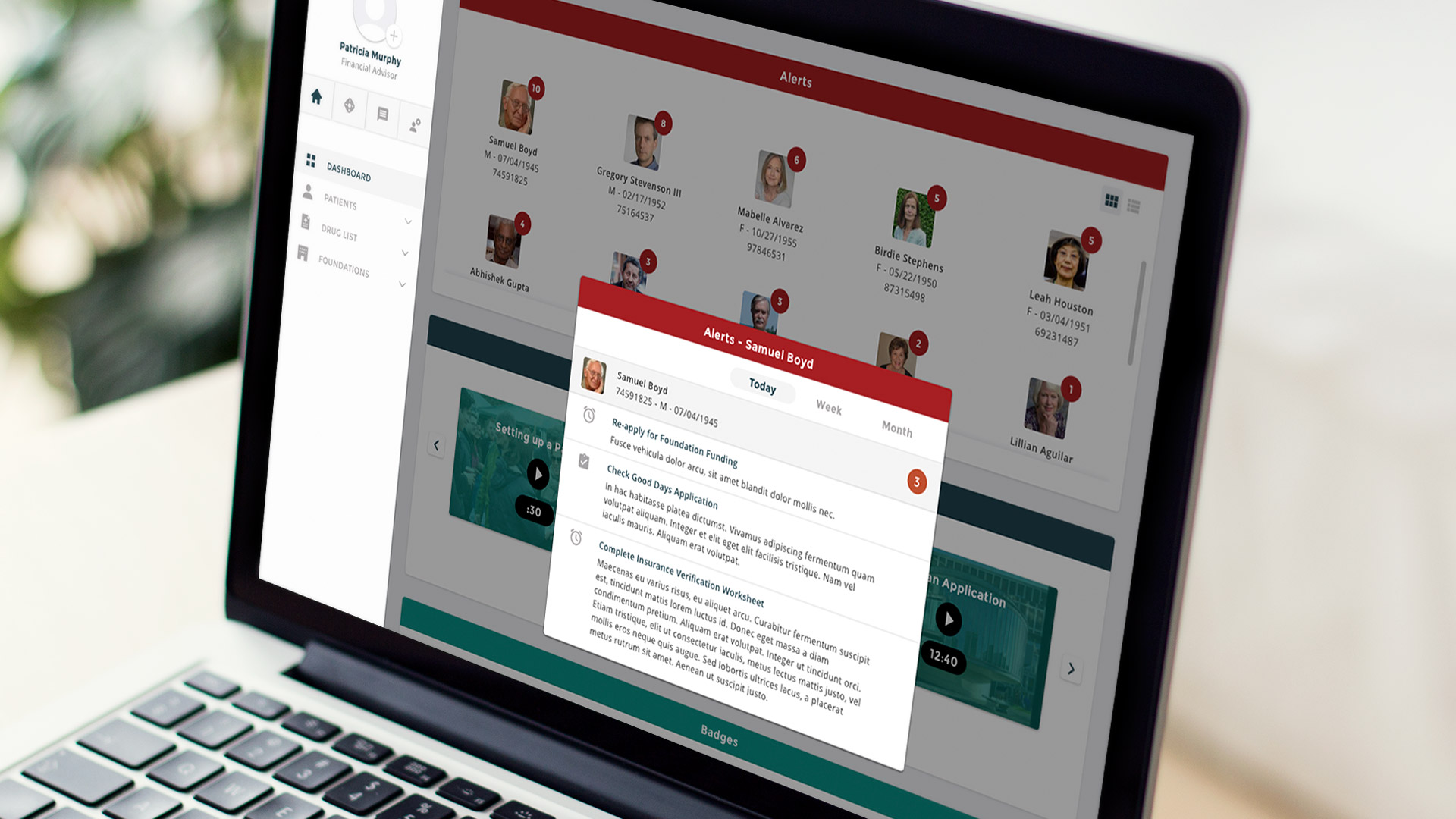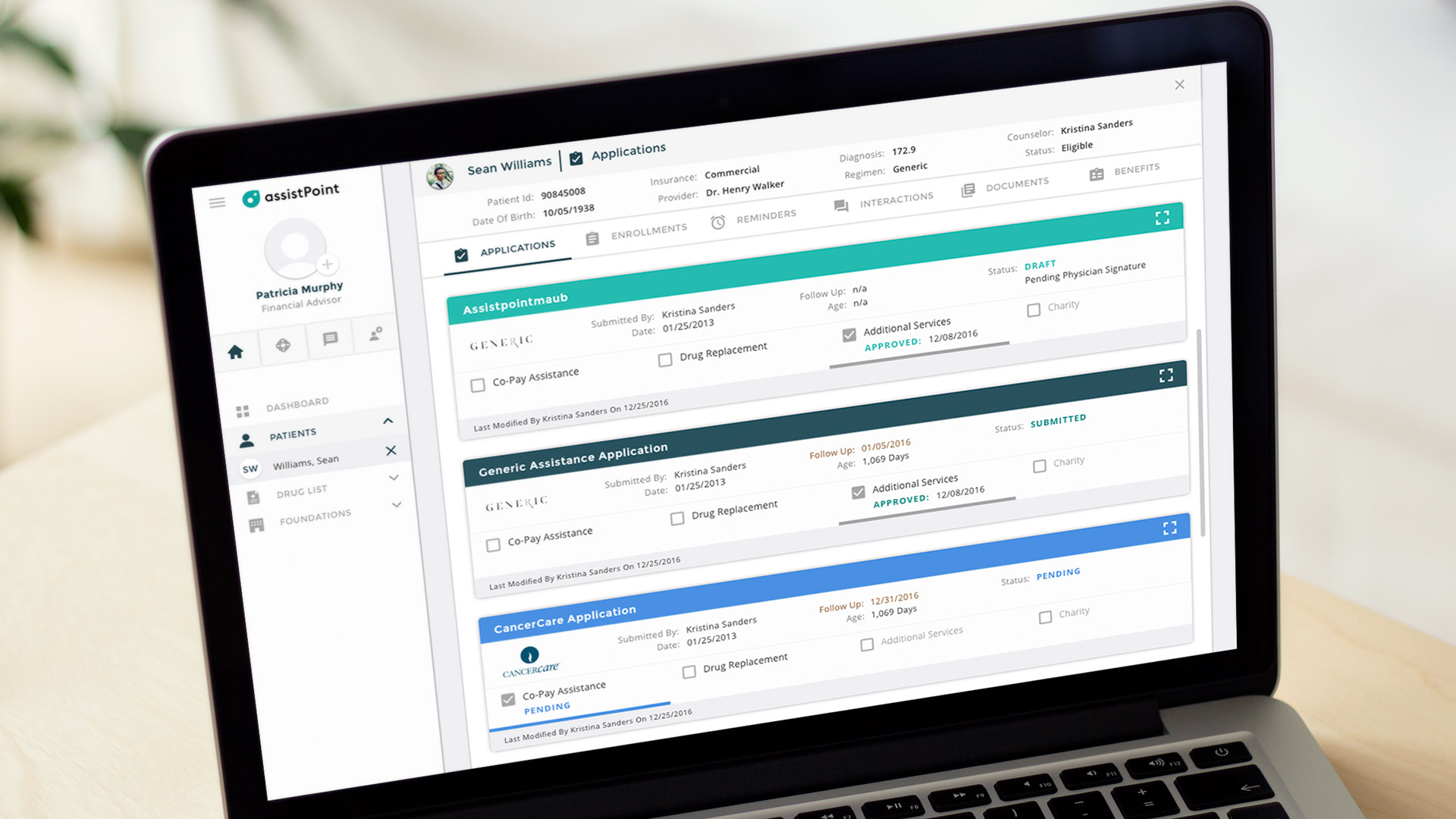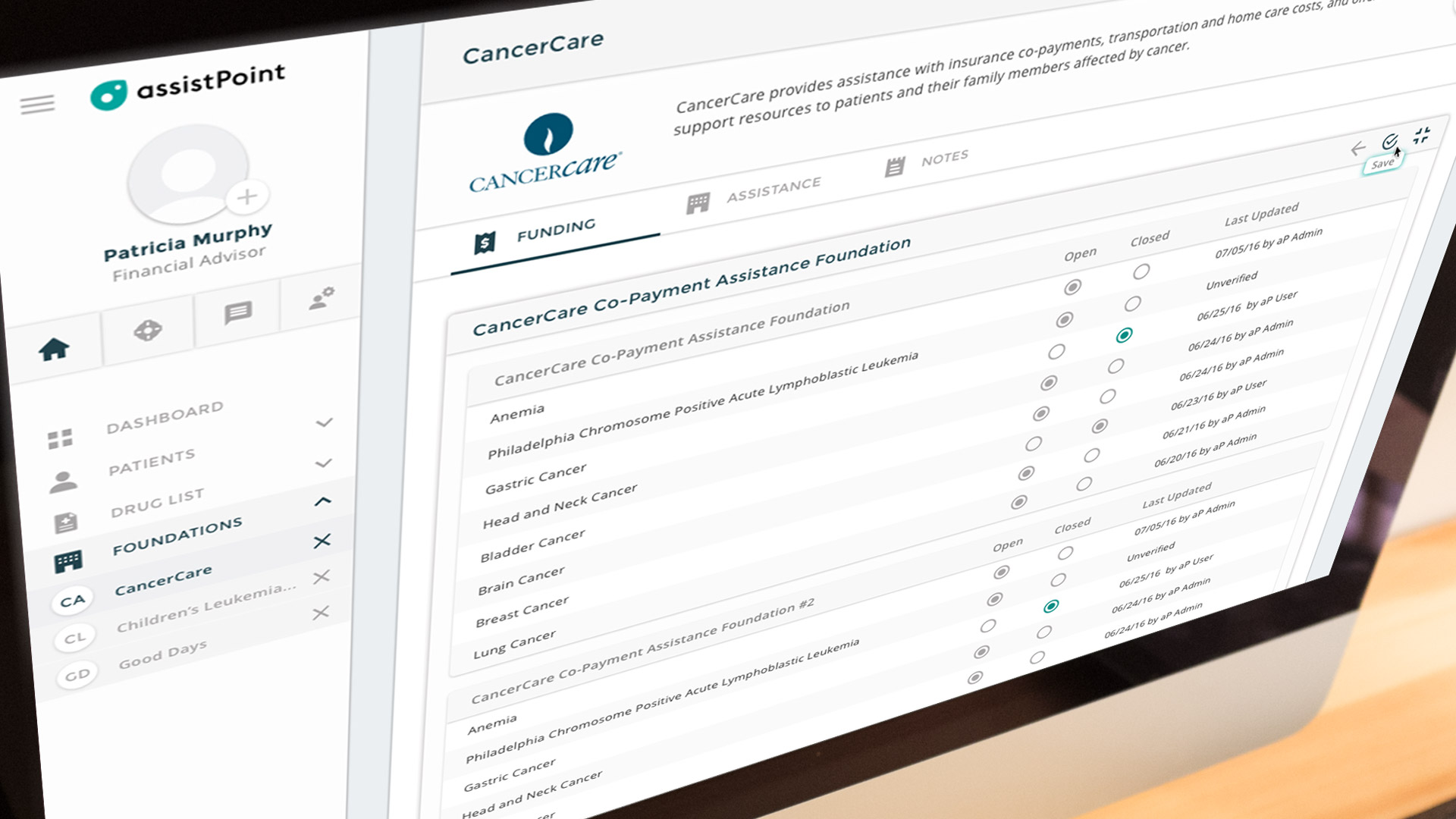assistPoint
AssistPoint is a cloud-based workflow solution for oncology patient assistance programs. As lead designer, I teamed with stakeholders, developers and quality analysts in meeting an aggressive launch date. Organizing numerous design sprints, conducting on-site research and user-testing prototypes helped us target and dissolve client pain points.
Challenge
When a patient is diagnosed with cancer, they are typically assigned a financial advisor/ financial counselor to help them find available assistance. Drug Manufacturers and Foundations are the two primary sources of oncology patient assistance. Support for drug assistance varies by Patient Diagnosis Codes (ICD 9/10). assistPoint was created to help financial advisors to track each patient’s application for financial assistance and view the available funds for approved enrollments.
Research
Through phone calls and on-site interviews at client work centers we were able to identify certain issues.
1. Advisors would often loose track of available funding because of manual filing systems and antiquated practices. Excel sheets and reminders attached to old CRT Monitors were how they kept track of expiring funds and patient assistant programs.
2. Client workstations included outdated hardware and software requiring the web application to be IE9 compatible.
3. The advisors were very passionate about their work but were often overwhelmed by their day-to-day tasks.
Getting to know our end user and their everyday struggles empowered us to create a workflow solution that increased their efficiency and capacity to provide assistance to thousands of patients.
Process & Execution
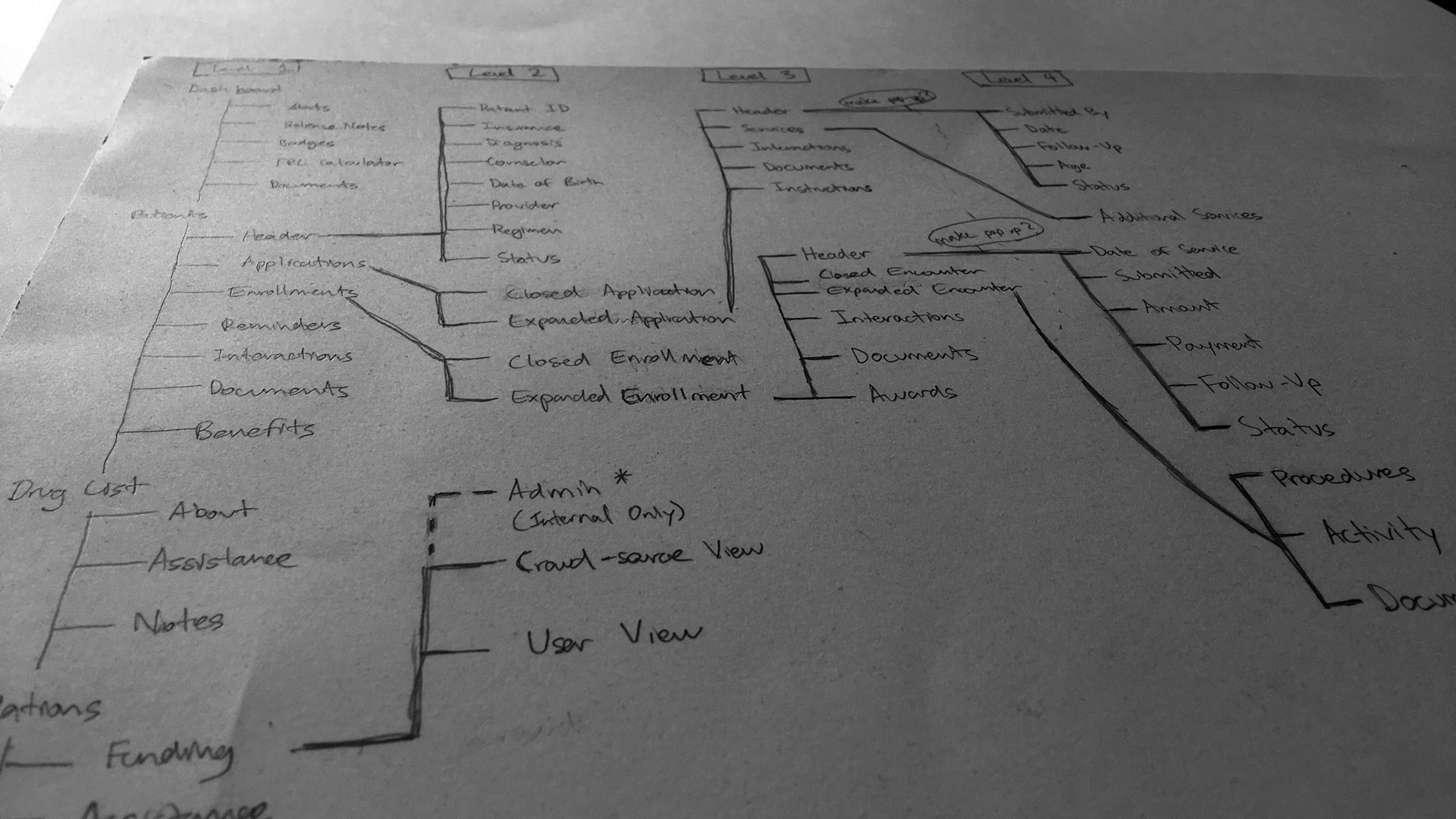
We embraced an Agile/SCRUM work environment. The product manager would meet with stakeholders to define a MVP and set sprint goals. We would prioritize the requirements set by the MVP on a roadmap, which would guide our design sprints. In design sprints, card sorting clarified the information architecture, and all sketching and concept development revolved around client-based personas. All final designs and prototypes were tested and presented internally/externally before handing off to developers. Although embracing Agile was a challenge it proved invaluable as we succeeded in meeting our targeted launch date.
Feedback

When assistPoint launched, financial advisors/counselors were able to:
1. Search and find applications based on patients diagnosis code. 2. Search Drugs and Foundations for general information and available funding. 3. Track a patient’s applications & enrollments, set reminders, view interactions & benefits, create notes and upload documents. 4. Keep track of available funds in enrollments.
Although the initial features were a huge step forward, we still had a queue of features we planned to release on our roadmap. We used weekly check-ins with clients to keep track of what was working and what could be improved upon and we also received feedback on prototypes of upcoming features.
Takeaways

1. While the active end-user is best for informing you on the effectiveness and ease of use of your current product. They never truly know what they want until you deliver it to them. An engaging product cannot be created by solely following the end users every request. The best solutions are those that align with user assumptions.
2. Well-designed products start from the top down. High quality standards lead to high quality products. Pressure to meet certain business demands led to moving targets and constant shifting of priorities. This at times led to a “good enough now, fix it later” mindset, which proved troublesome to the initial adoption of the product and indirectly lowered standards for the project. As unfortunate as these mistakes were I believe they were a necessary learning experience for the product team.
